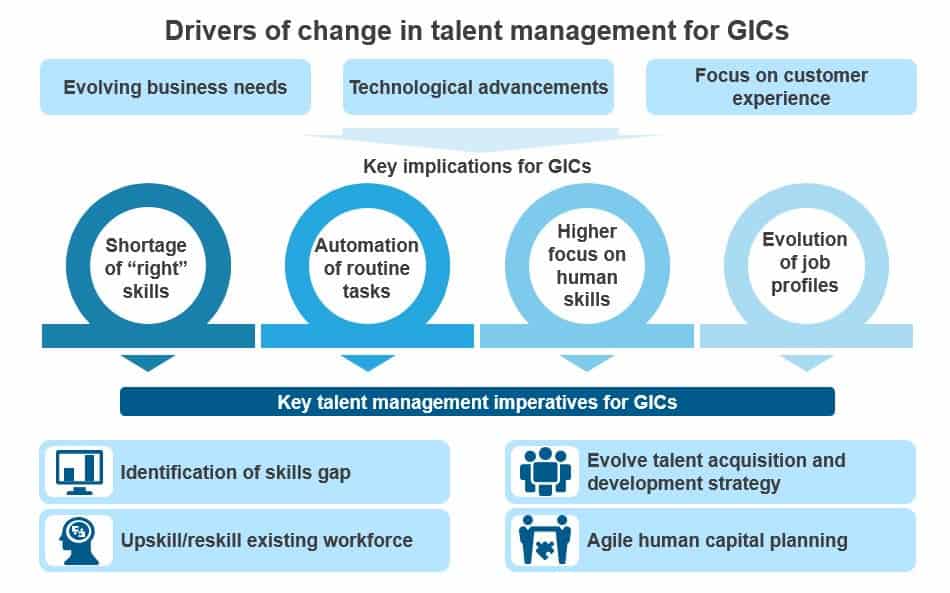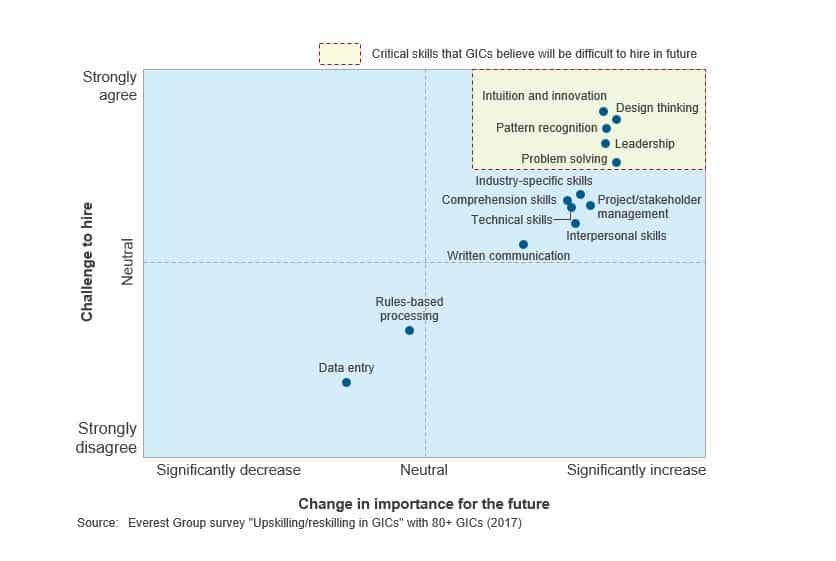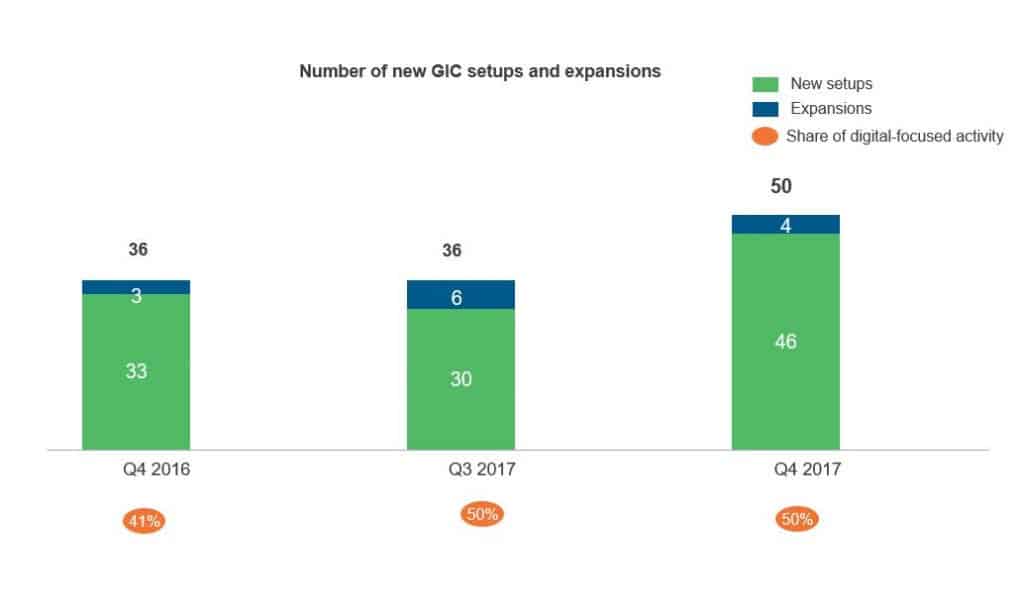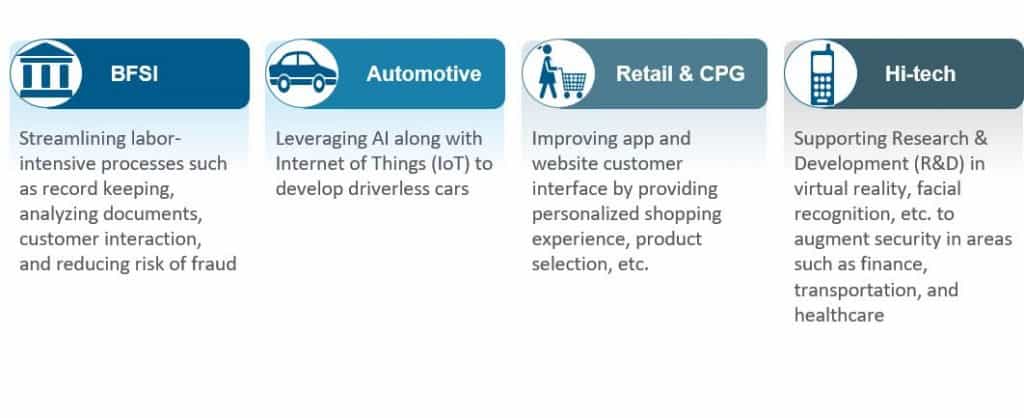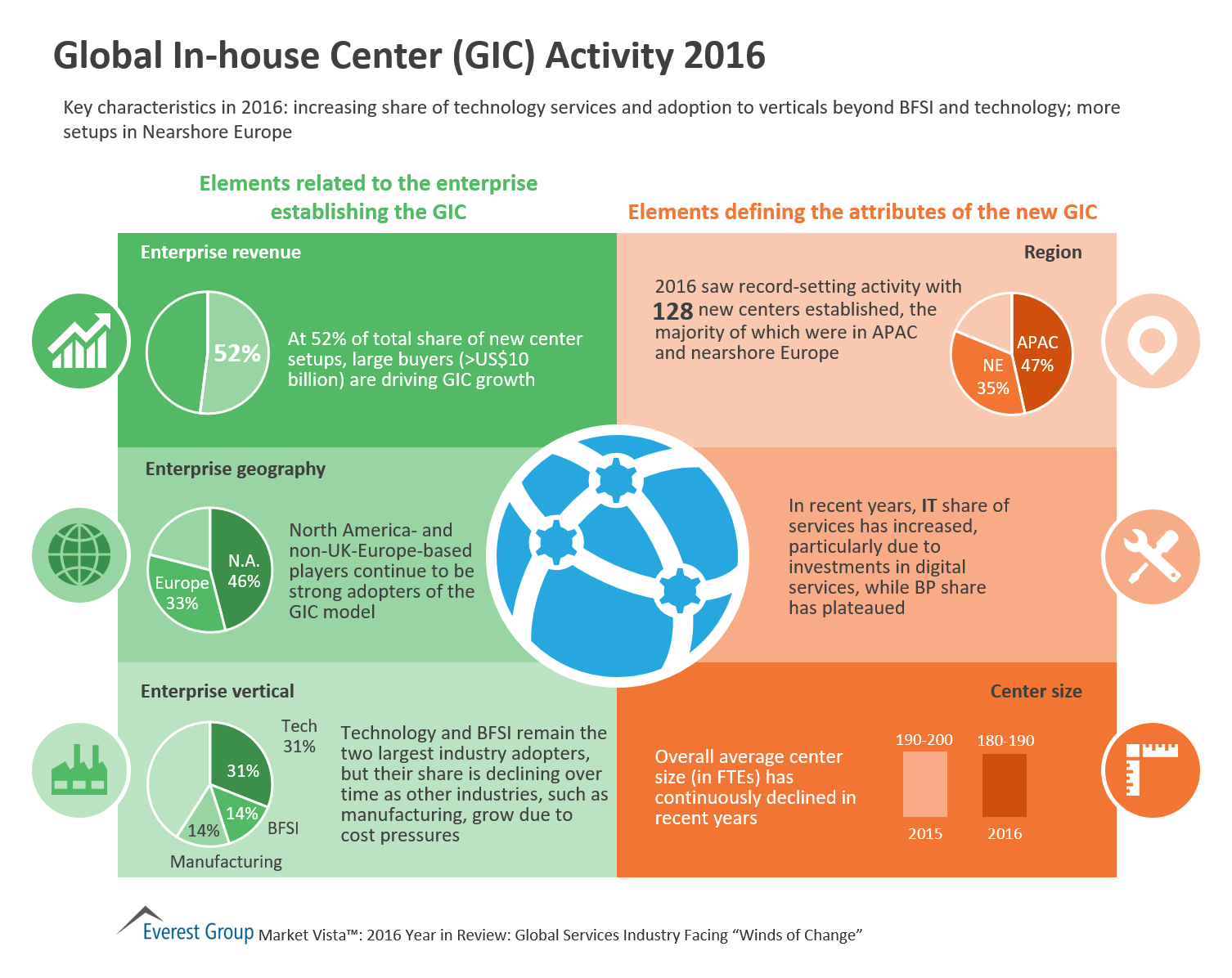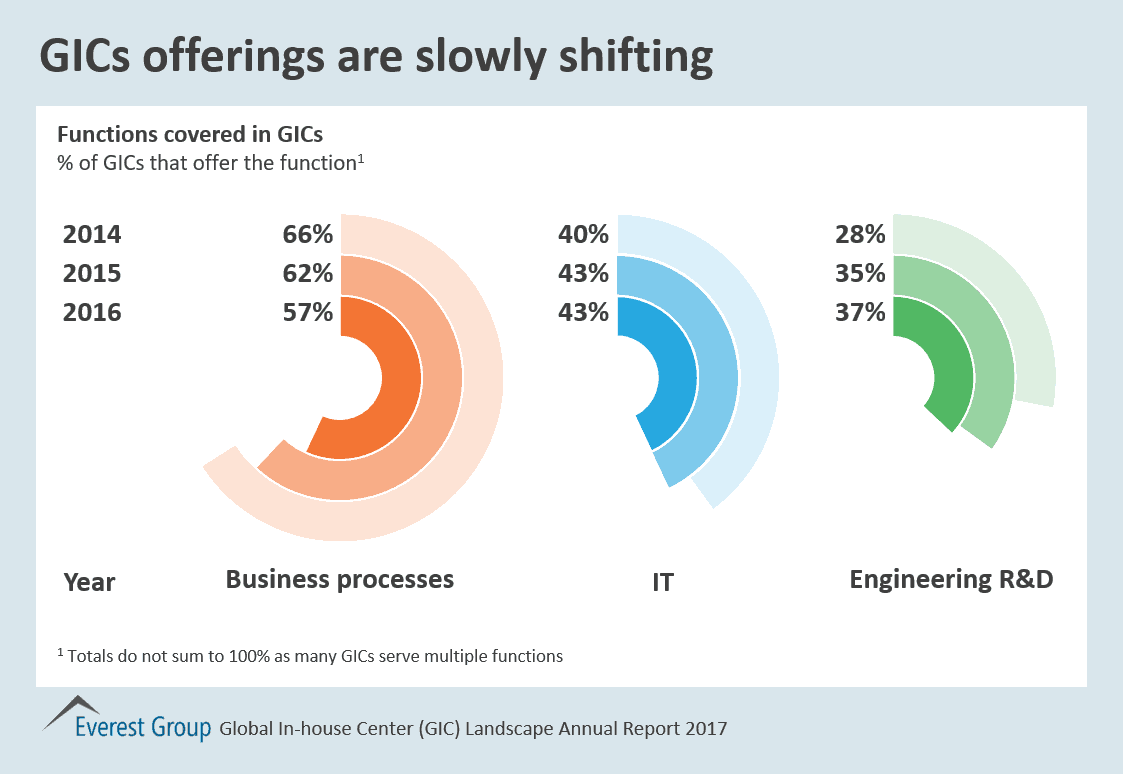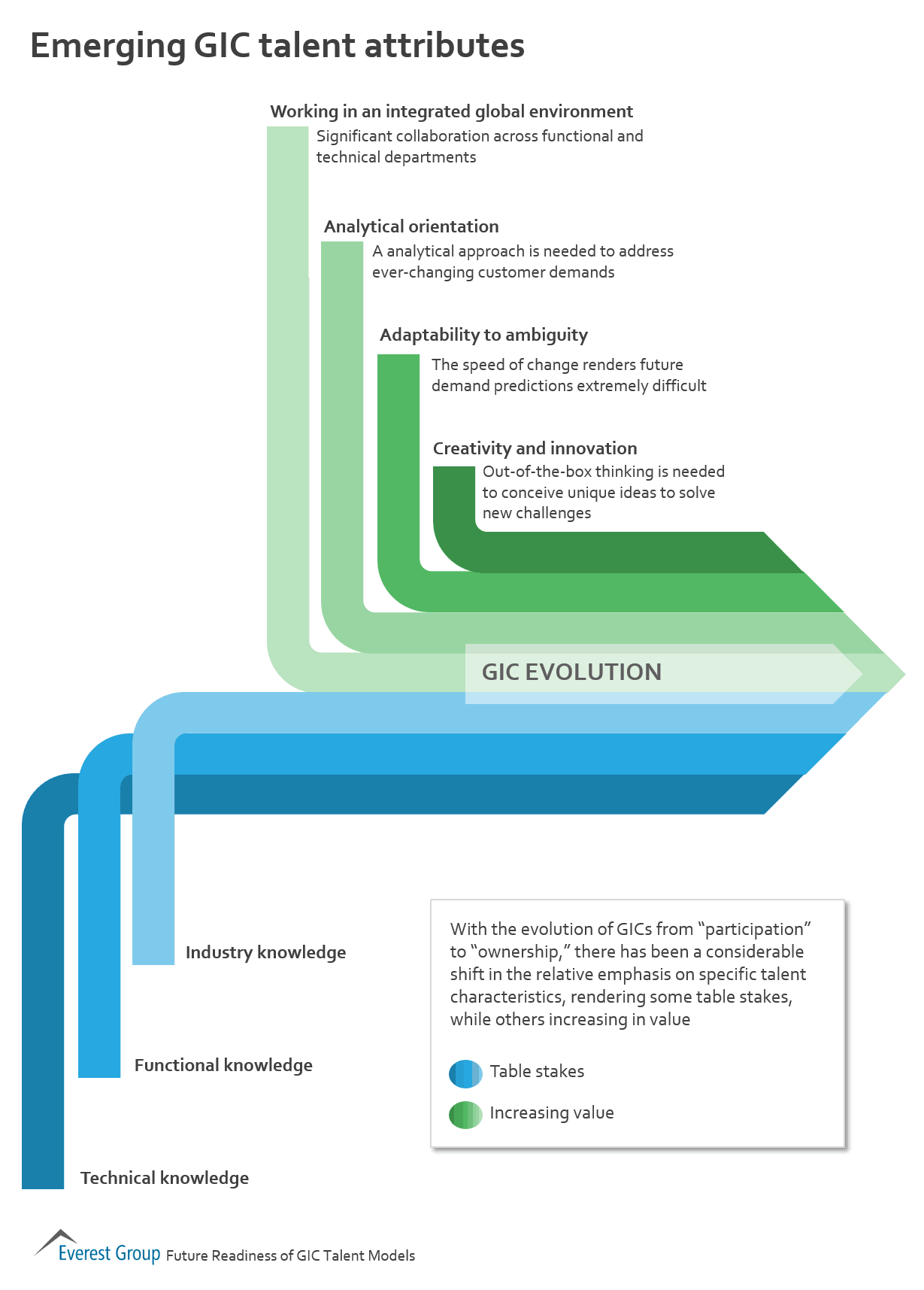Everest Group Identifies ‘Pinnacle GICs,’ Digital Capabilities That Exemplify Best-of-the-Best Global In-House Centers | Press Release
Digitally mature GICs vastly outperform others in delivering strategic impact, operational improvements and cost savings.
Everest Group has deemed 11 enterprise Global In-house Centers (GICs) as Pinnacle GICs™—GICs that are achieving superior business outcomes because of their advanced digital capabilities. More importantly, Everest Group has analyzed what these Pinnacle GICs are doing well and is sharing the secrets of their success.
Many GICs are playing a key role in driving their enterprises’ digital agendas, thanks to the rise of next-generation technologies such as mobility, analytics, cloud, automation, and other enabling technologies. While most GICs are in the early- to mid-stages of digital adoption, some GICs have performed better than others by building and orchestrating differentiated capabilities and deriving superior outcomes.
Everest Group’s Pinnacle Model™ approach explores what the very best GICs are doing in terms of real impact and then correlates the capabilities required to achieve those results. By examining what these Pinnacle GICs have in common, others can learn how to succeed, whether they desire to make incremental changes or achieve major transformations.
Everest Group studied the digital adoption journey of 54 GICs, examining five key capability areas—scale of operations and penetration across digital segments, breadth and depth of services, digital talent, operating model and level of influence, and innovation. When those key capabilities were correlated with business outcomes, 11 Pinnacle GICs rose to the top.
As a group, the 11 Pinnacle GICs significantly exceed other GICs in three key outcome areas:
- Cost impact: Pinnacle GICs generated 53 percent ROI from digital initiatives, while 44 percent of other GICs are yet to achieve ROI at all.
- Operational impact: Pinnacle GICs achieved 46 percent improvement in operational metrics, compared to 19 percent by other GICs.
- Business impact: 68 percent of Pinnacle GICs generated significant strategic impact, compared to 37 percent of other GICs.
“We found that Pinnacle GICs as a group are 1.8 times more invested than other GICs in supporting multiple business units with digital capabilities and 3 times more likely to provide end-to-end support within digital segments,” said Michel Janssen, chief research guru at Everest Group. “These discrepancies illustrate in a striking way that the GICs that are investing in and applying digital capabilities with breadth and depth across their organizations are reaping drastically superior outcomes in the marketplace. The bottom line for enterprises is that embracing digital is an imperative, not just an opportunity, and the speed of digital adoption is critical to derive maximum impact.”
Everest Group’s recently released report, “Digital Maturity in GICs: Pinnacle Model™ Analysis 2018” describes the journeys of these best-of-the-best companies, provides insights into the key enablers needed to achieve desired outcomes, and points to the investments required for the greatest speed to impact.
***Download a complimentary abstract of the report here.*** (Registration required.)
“Our Pinnacle Model assessments show organizations exactly who is succeeding and how,” added H. Karthik, partner, Global Sourcing, at Everest Group. “One of the most valuable aspects of this research is that we are able to identify Pinnacle Accelerators™, which are specific methods organizations can use to accelerate their digital transformation journey. Armed with clear points of comparison and insightful recommendations, organizations are better equipped to prioritize where to invest their time and resources and plan their own path to the top.”
About the Pinnacle Model
Everest Group’s proprietary Pinnacle Model™ assessments, which include input from executives from leading Fortune 1000 companies, compare internal capabilities to desired business outcomes, such as disrupting the industry, improving customer experiences, increasing market share, and launching innovative products and services. By highlighting what the best—Pinnacle Enterprises™—are doing, these performance studies help organizations plot a journey from their current position to where they want to go, prioritize investments of time and resources for maximum impact, and accelerate change.
